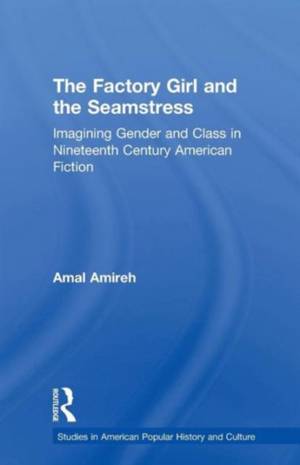
Je cadeautjes zeker op tijd in huis hebben voor de feestdagen? Kom langs in onze winkels en vind het perfecte geschenk!
- Afhalen na 1 uur in een winkel met voorraad
- Gratis thuislevering in België vanaf € 30
- Ruim aanbod met 7 miljoen producten
Je cadeautjes zeker op tijd in huis hebben voor de feestdagen? Kom langs in onze winkels en vind het perfecte geschenk!
- Afhalen na 1 uur in een winkel met voorraad
- Gratis thuislevering in België vanaf € 30
- Ruim aanbod met 7 miljoen producten
Zoeken
The Factory Girl and the Seamstress
Imagining Gender and Class in Nineteenth Century American Fiction
Amal Amireh
€ 99,45
+ 198 punten
Uitvoering
Omschrijving
This book studies the representations of working-class women in canonical and popular American fiction between 1820 and 1870. These representations have been invisible in nineteenth century American literary and cultural studies due to the general view that antebellum writers did not engage with their society's economic and social relaities. Against this view and to highlight the cultural importance of working-class women, this study argues that, in responding to industrialization, middle class writers such as Melville, Hawthorne, Fern, Davies, and Phelps used the figures of the factory worker and the seamstress to express their anxieties about unstable gender and class identitites. These fictional representations were influenced by, and contributed to, an important but understudied cultural debate about wage labor, working women, and class.
Specificaties
Betrokkenen
- Auteur(s):
- Uitgeverij:
Inhoud
- Aantal bladzijden:
- 160
- Taal:
- Engels
- Reeks:
Eigenschappen
- Productcode (EAN):
- 9781138868007
- Verschijningsdatum:
- 12/08/2015
- Uitvoering:
- Paperback
- Formaat:
- Trade paperback (VS)
- Afmetingen:
- 137 mm x 213 mm
- Gewicht:
- 249 g

Alleen bij Standaard Boekhandel
+ 198 punten op je klantenkaart van Standaard Boekhandel
Beoordelingen
We publiceren alleen reviews die voldoen aan de voorwaarden voor reviews. Bekijk onze voorwaarden voor reviews.









